#los angeles times photographic collection
Photo

“Two Runaway Girls Say They Will Do It Again,” Los Angeles Times, Oct 4, 1935
#1930s#1930s fashion#vintage fashion#los angeles#vintage#old los angeles#los angeles times#great depression#photography#black and white#photo restoration#ucla department of special collections#los angeles times photographic collection#ark:/21198/zz002dgx0c
467 notes
·
View notes
Text

Sharon Tate, photographed by John Verzi. Verzi dated the image as March 30th, 1967.
The Los Angeles Public Library acquired the entire John Verzi Collection at auction for $144,000. The collection consists of over 12,000 slides and photographs taken by Verzi. The library has stated that the collection will be available to view online after it is properly catalogued and archived. A handful of images were used by The Los Angeles Times in articles about the collection, including this one of Sharon.
#sharon tate#John Verzi#1967#Hollywood#candid#actress#cinema#old hollywood#vintage#1960s#sixties#film
199 notes
·
View notes
Text
Some tangible Black queer history for you!
In case you needed any more proof that we've always been here - this amazing collection is courtesy of the Stonewall National Musuem and Archive!
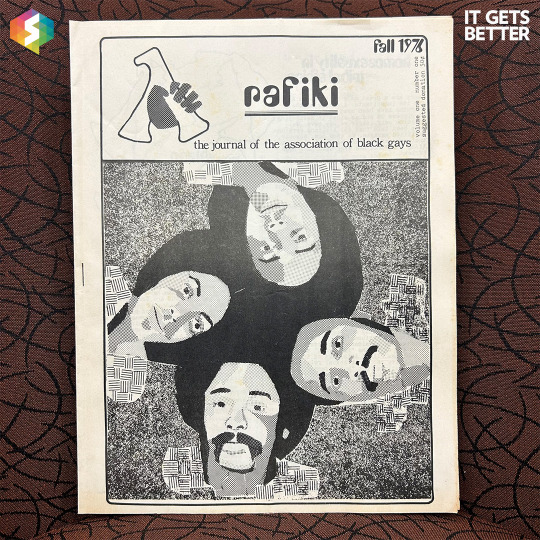
Rafiki: The Journal of the Association of Black Gays, Vol. 1 #1 (Fall 1976)
"Rafiki was a quarterly publication from the Association of Black Gays (ABG), a Los Angeles, California gay activist group that organized through education, political engagement, and grassroots activism to
improve the conditions for Los Angeles’s Black gays and lesbians.
According to the journal, the title Rafiki was chosen because it means “friend” in Swahili and “that’s what [ABG] hope to be for you.” This first issue includes an article on the history of ABG and the fact that Black gays and lesbians have been largely excluded from the political, social, and economic advances of the gay community.
Included in this issue are articles such as “Homosexuality in Tribal Africa” and “Disco Discontent” (an open letter to the owner of Studio One, Scott Forbes), as well as poetry by Steven Corbin and Frances Andrews, and book reviews. It even contains an ad for the famous Catch One Club owned by Jewel Williams, which is still
operating today!"

I Am Your Sister: Black Women Organizing Across Sexualities by Audre Lorde (Kitchen Table: Women of Color Press, 1985; from the Freedom Organizing Series)
You can read this one here!
"This small twelve-page publication derives from a speech Audre Lorde gave at the Women’s Center of Medgar Evers College in New York City regarding the exclusion of Lesbians in the feminist movement and how Lorde’s identity as both a Black woman and lesbian are inextricably linked.
Primarily, heterosexism and homophobia are major issues Lorde states are “two grave barriers to organizing among Black women.” Lorde ends the essay with the statement: “I am a Black Lesbian, and I am your sister.”
Her emphasis on the duality of this identity stems from a 1960s poster that said “He’s not black, he’s my brother!,” which Lorde states infuriated her because “it implied that the two were mutually
exclusive.”
Kitchen Table: Women of Color Press was founded by Barbara Smith—another Black Lesbian feminist—and Audre Lorde in 1980 to create a publishing apparatus for women of color who at the time did not have control over how they were published except through the white-dominated outlets."

Flawless! The Life & Times of T.B.D.J. AKA Tiffani Inc. AKA Mrs. … (Manuscript) by Tiffany Bowerman (July 2007, A&E Publishers)
This autobiographical manuscript traces the life of Tiffany Bowerman aka Tiffany B.D. Johnson (b. 1959), who states that she “was the first African-American Transsexual to have state issued birth certificate reissued [1990]… was the first to legally marry three different active duty military men… [and] first… to found their own Christian Denomination… The Agape-Ecumenical Christian Denomination.”
Further, she states “I have tried to put together something striking and original[,] a journey from childhood to self aware adult. A life that was and is with all regrets included.”
This manuscript is a preliminary copy of a rough draft, and contains various memoirs, photographs, legal documents, and ephemera.
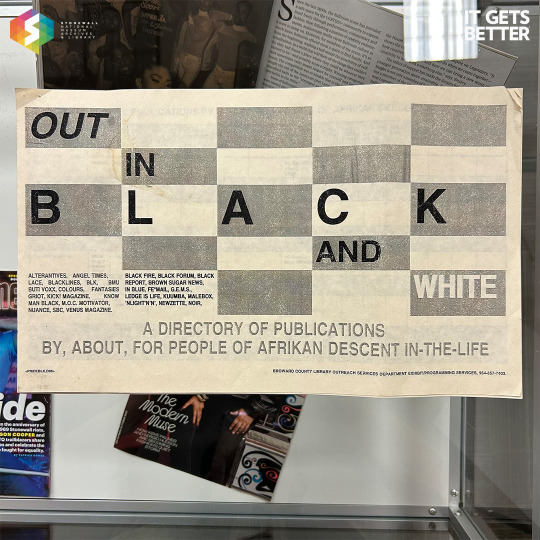
Out in Black and White: A Directory of Publications By, About, For People of Afrikan Descent In-The-Life by the Broward County Library Outreach Services Department Exhibit/Programming Services with direction by Eric Jon Rawlins (January, 1996)
Out in Black and White is a directory of various serial publications (magazines, newsletters, journals, etc.) throughout the United States that are focused on the Black LGBTQ experience. According to the directory, “[t]his project was inspired by the atmosphere of strength, oneness and productivity created by the Million Man March [on October 16,] 1995.”
The Million Man March was a political demonstration that took place at the National Mall in Washington, D.C. with the purpose of encouraging involvement in the improvement of the conditions of African Americans. Eric Jon Rawlins was a Broward County, Florida librarian who at one time was also the second vice president of the NAACP Fort Lauderdale branch in the late 1980s.
Currently, the Eric Jon Rawlins Collection consisting of personal and professional papers, as well as his 6,000 vinyl record album collection, are housed at the African American Research Library and Cultural Center Special Collections in Broward County, FL.
#it gets better#black history month#bhm#black trans lives matter#lgbtqia#queer history#lgbtq history#black history#queer archive#queer lit#studyblr
103 notes
·
View notes
Text

"'Old Ironsides' Crowds Grow; Total of Visitors Yesterday Placed at 19,261; Many More Turned Away at Closing Hour; Legislators Planning Appeal to Entire State."
View of the Goodyear Blimp passing over USS Constitution while she is berthed in San Pedro, California.
Date: February 19, 1933.
Part of the Los Angeles Times Photographic Collection.
UCLA Library Digital Collection: uclamss_1429_4190
#USS CONSTITUTION#Old Ironsides#United States Class#44-gun Frigate#Original 6 frigates#Sailing Ship#Warship#Ship#San Pedro#California#West Coast#February#1933#interwar period#my post
68 notes
·
View notes
Text
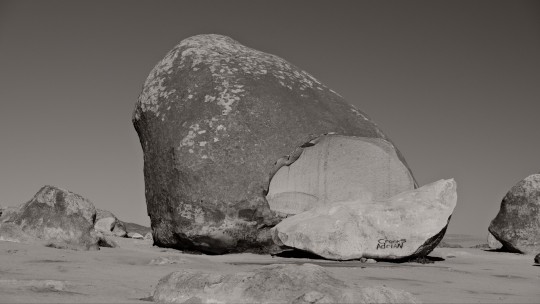
"Giant Rock is a large freestanding boulder in the Mojave Desert near Landers, California, and the Marine Corps Air Ground Combat Center Twentynine Palms (location 34°19′58.1988″N 116°23′19.5066″W[1]). The boulder covers 5,800 square feet (540 m2) of ground and is seven stories high.[citation needed] Giant Rock is the largest freestanding boulder in North America and is purported to be the largest free standing boulder in the world.
Native Americans of the Joshua Tree area consider it to be sacred[citation needed]. In the 1930s, Frank Critzer moved to Giant Rock. Inspired by desert tortoises that dig holes in which to cool themselves, Critzer dug out a home on the north side of the rock using dynamite. He engineered a rainwater collection system and a tunnel for ventilation. The underground home was reportedly never hotter than 80 °F (27 °C) and never cooler than 55 °F (13 °C). Critzer built an airstrip on the nearby ancient lakebed, which averaged a plane per day by 1941.[3] Critzer perished in a self-detonated dynamite explosion in his underground rooms on July 24, 1942, while being investigated by local police.
In the 1950s, Giant Rock was a gathering point for UFO believers. It is located on land which was at that time leased by George Van Tassel, a friend of Critzer's, a purported flying-saucer contactee and organizer of UFO conventions.[5] In 1947, Van Tassel, a former aircraft inspector, leased the property from the Bureau of Land Management and left Los Angeles and moved to Giant Rock with his wife and three children.[3] Van Tassel also built the nearby Integratron and a cafe, store, gas station and the Giant Rock Airport, which he operated from 1947 to 1975.
In early 2000,[2] Giant Rock fractured in two, revealing an interior of white granite.[3] The exterior surface of the rock is partially covered in graffiti." Wikipedia
(FF)
******
It was Thanksgiving weekend when I drove out to see this "big rock". Lots of off-roaders peppered the area and spoiled many of the shots I wanted of this rock. They also made getting up closer not enjoyable. So, I took some photographs and drove away.
A return visit will need to be considered.
37 notes
·
View notes
Text
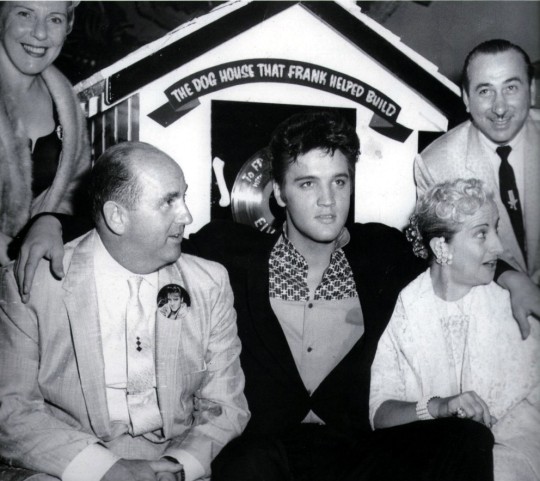

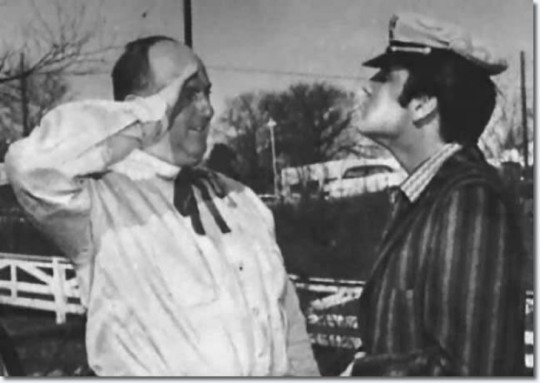



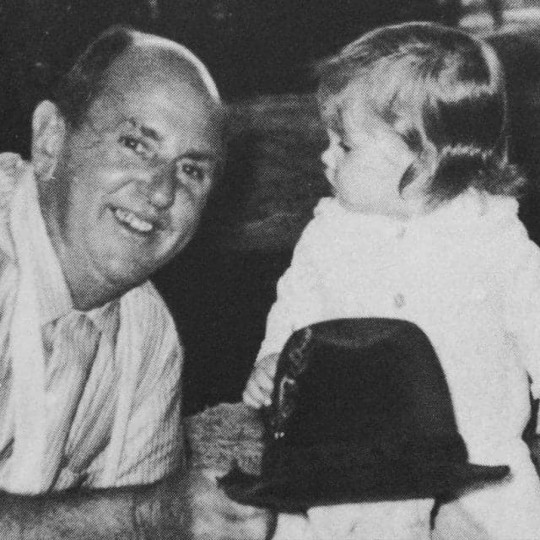



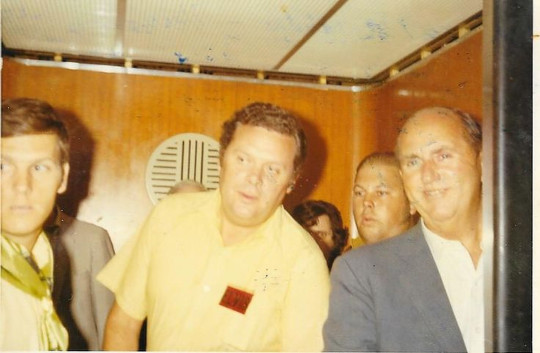
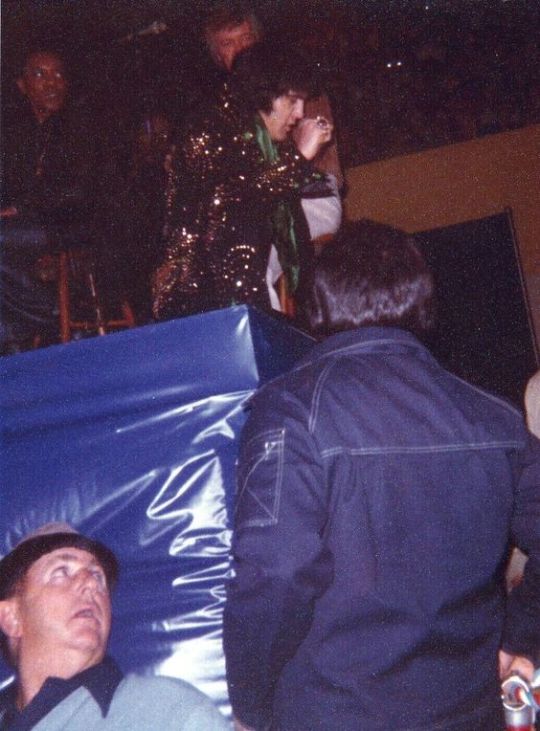
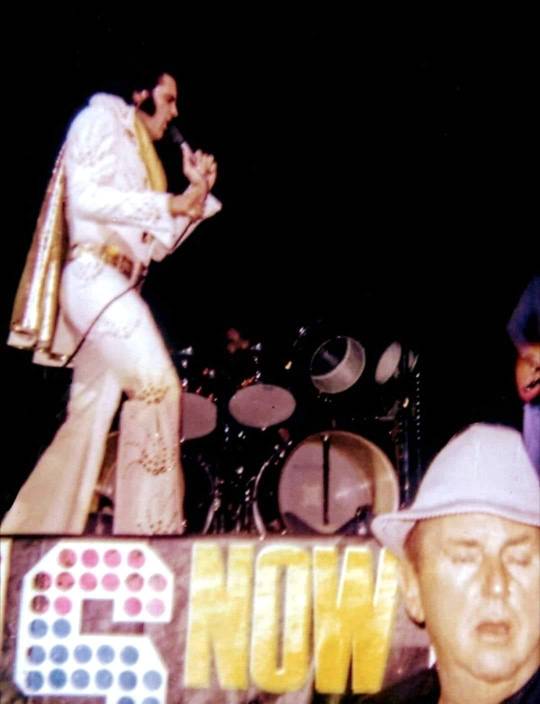
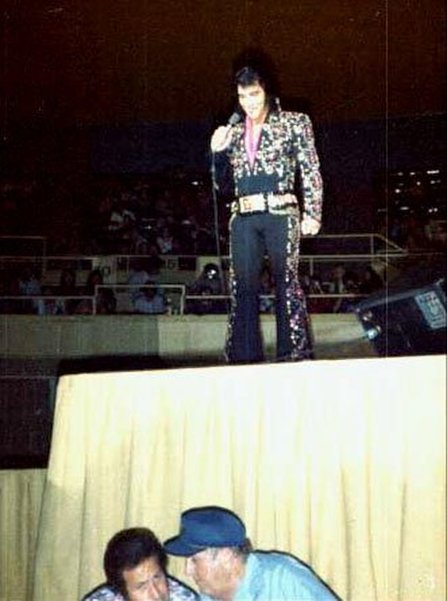
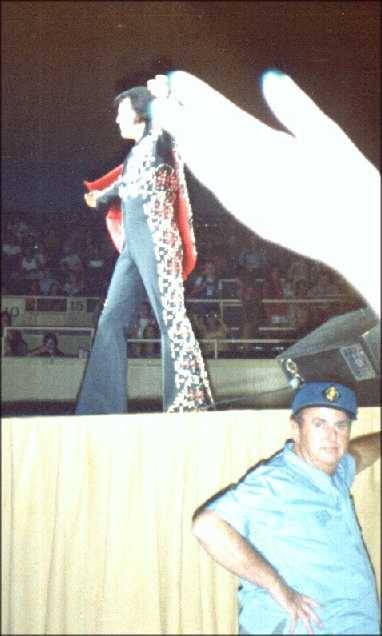



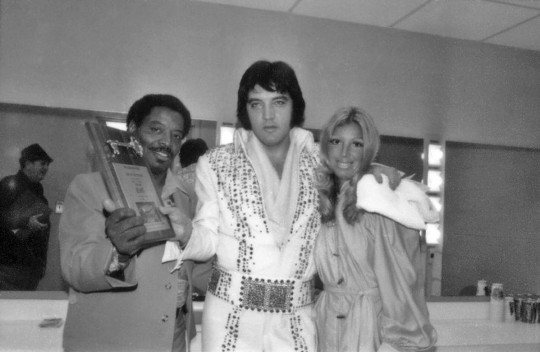
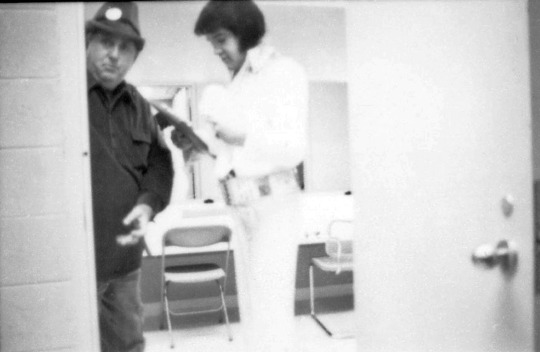
It's my last Tumblr post for 2023, the year that saw the release of an Elvis biopic by Buz Luhrmann. Tom Hanks received some criticism along the way for his portrayal of Parker, with everything from his prosthetic makeup to his accent being singled out. As the year ends, lets take a look at some of the pictures I've collected of the real "Thomas Andrew Parker" during his years with Elvis.
Elvis and Parker at an RCA-Paramount Pictures party at the Beverly Wilshire Hotel in Los Angeles on 18th May 1957.
Two pictures from December 21, 1957, when Elvis went to Parker's home (1215 Gallatin Road in South Madison, Tennessee) to deliver a Christmas present - a new BMW Isetta microcar.
It’s 9:15am at Fort Dix, NJ on 5th March 1960 and Elvis is being honorably discharged from the Army. As he collects his mustering out cheque for $109.54 he kids with the Colonel about his percentage. In later years that would be far from a laughing matter.
Parker shows his sense of humour during the filming Roustabout in 1964 when a birthday party is held for Elvis’ cousin, Billy Smith.
On the NBC set in Los Angeles, Elvis sung a birthday song ‘It Hurts Me’ (in an amusing parody) for the Colonel, 26 June 1968.
A couple of rare shots of Parker with baby Lisa Marie.
Two pictures of Parker and Elvis at the August 1, 1969 press conference in Las Vegas announcing Elvis' new residency at the International Hotel (the Hilton as of 1972).
In this candid shot, we see Parker in a hotel elevator while on tour in Mobile Alabama in 1971 with one of his constant business companions, longtime RCA Records executive George L. Parkhill (centre in yellow shirt). Parkhill’s main task was "working with Elvis." That basically meant he supervised Elvis' concert tours and, when Elvis was in Los Angeles, monitoring all activities that involved him being RCA's top money maker.
The Colonel below the stage as Elvis performs in Cincinnati in the Black Fireworks jumpsuit on November 11, 1971.
Parker once again staying close to this star client below the stage at the evening appearance at Madison Square Garden on June 9, 1972.
Two pictures of Parker below the stage at the afternoon show in Honolulu on November 18, 1972. In the first picture he's picked an unusual spot to have a chat with Joe Esposito.
An undated picture of Colonel Parker on tour with Elvis in the early 1970s.
Colonel Parker before a concert in Detroit at Olympia Stadium on September 29, 1974.
Perhaps the last time Parker and Elvis were photographed together was in the dressing room just before the new years eve concert in Pontiac, MI, on December 31, 1975. At the time Parker had allowed a visit by local mayor Wallace E. Holland and Oakland press writer Jackie Kallen who presented an award.
#Elvis#Elvis Presley#Colonel Tom Parker#Tom Parker#Colonel Parker#rock music#pop culture#candid#1950s#50s#fifties#1960s#60s#sixties#1970s#70s#seventies
40 notes
·
View notes
Text
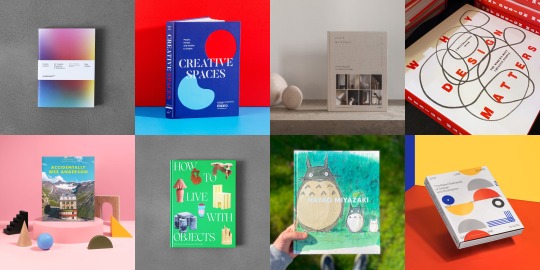
8 Summer Reads For Creative Inspiration
Summer is the perfect time to relax, recharge, and dive into inspiring books that can fuel your creative spirit!
Whether you're passionate about design or you're a design professional, there are numerous books out there that can provide you with fresh ideas, and the motivation to push your creativity.
In this article, we bring you eight must-read books that will spark your creativity and leave you feeling inspired. So grab your favorite drink, find a cozy spot, and let these books transport you to a world of creative brilliance!
Palette Perfect for Graphic Designers and Illustrators: Colour Combinations, Meanings and Cultural References by Sara Caldas

Both a practical and inspirational book filled with color combinations for any design and illustration project. The use of color and its combinations creatively in illustration, graphic and product design also implies understanding what emotions they convey and how they affect our design and illustrations.
Purchase on Bookshop.org — $28 (On Sale)
—
Creative Spaces: People, Homes, and Studios to Inspire by Poketo
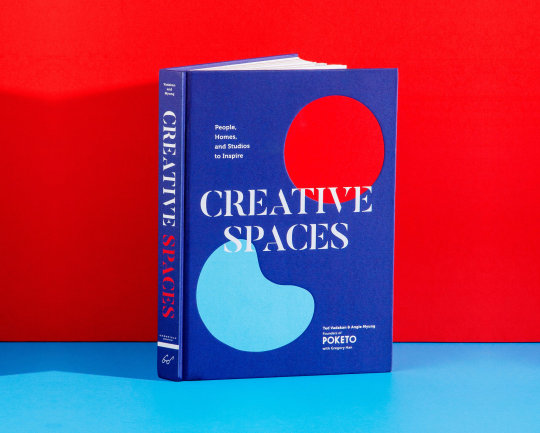
The debut book from acclaimed Los Angeles lifestyle brand Poketo! Creative Spaces: People, Homes, and Studios to Inspire explores the lives, homes, and studios of 23 artistic entrepreneurs, authors, and designers. From a colorful desk in a tiny closet to expansive homes, Creative Spaces features a collection of unique interiors from across the country.
Purchase on Bookshop.org for $33 (On Sale)
—
Soft Minimal by Norm Architects: A Sensory Approach to Architecture and Design
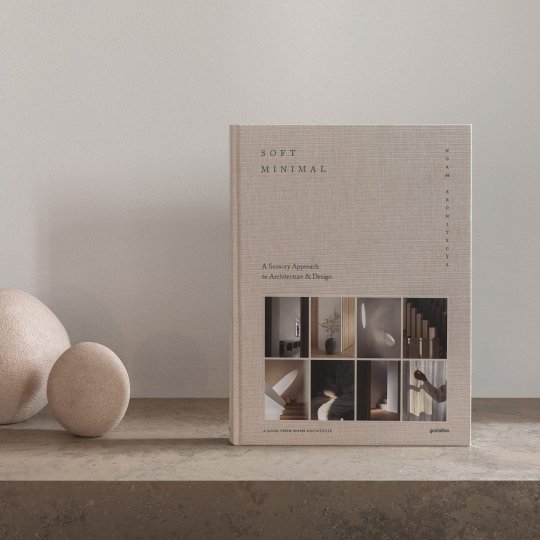
Norm Architects' humane simplicity creates environments that feel as good as they look. Guided by ideas of well-being, the essence of NA' style is balance: richness focused by restraint, simplicity imbued with warmth, and complexity heightened by order. Be it architecture, interiors, or furniture, Norm's unique brand of soft minimalism speaks to the mind as much as the body, creating spaces for people.
Purchase on Bookshop.org for $84 (On Sale)
—
Why Design Matters: Conversations with the World's Most Creative People by Debbie Millman
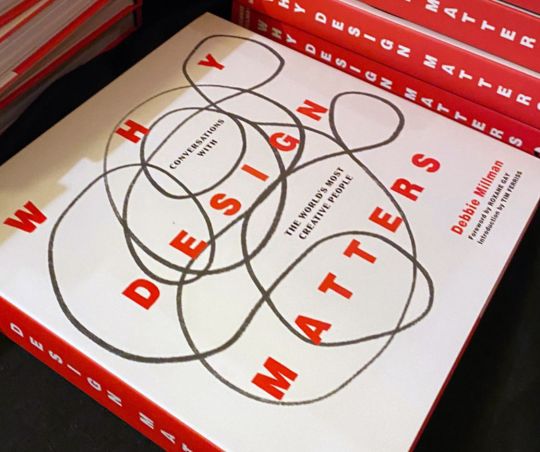
The author, educator, brand consultant, and host of the widely successful and award-winning podcast Design Matters showcases dozens of her most exciting interviews, bringing together insights and reflections from today's leading creative minds from across diverse fields.
Purchase on Bookshop.org for $56 (On Sale)
—
Accidentally Wes Anderson by Wally Koval
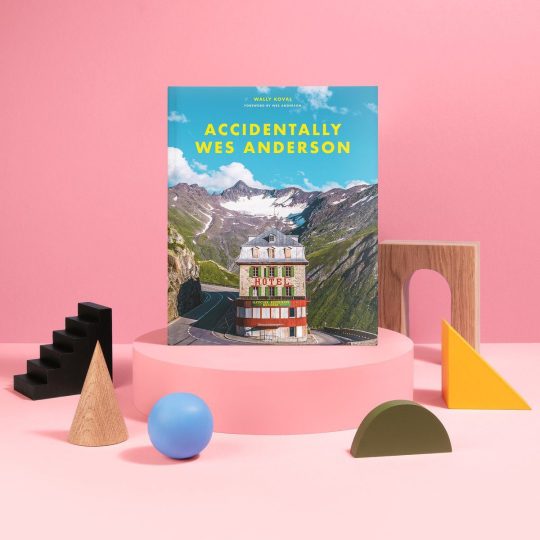
A visual adventure of Wes Anderson proportions, authorized by the legendary filmmaker himself: stunning photographs of real-life places that seem plucked from the just-so world of his films, presented with fascinating human stories behind each façade.
Purchase on Bookshop.org for $35 (On Sale)
—
How to Live with Objects: A Guide to More Meaningful Interiors by Monica Khemsurov and Jill Singer
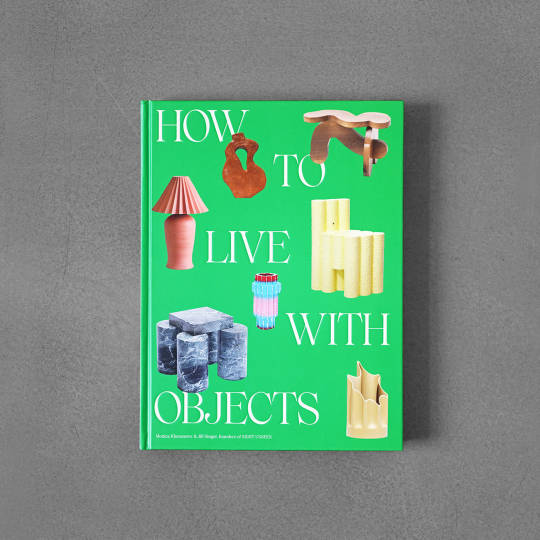
In the modern home, it matters less whether your interior is perfectly appointed and more if it's authentically personal, unique, and filled with the objects you feel a connection to. Through inspiring home tours and practical advice on how and what to collect, Monica Khemsurov and Jill Singer take you on an educational and highly visual journey through the questions at the core of their design philosophy.
Purchase on Bookshop.org for $56 (On Sale)
—
Hayao Miyazaki by Jessica Niebel
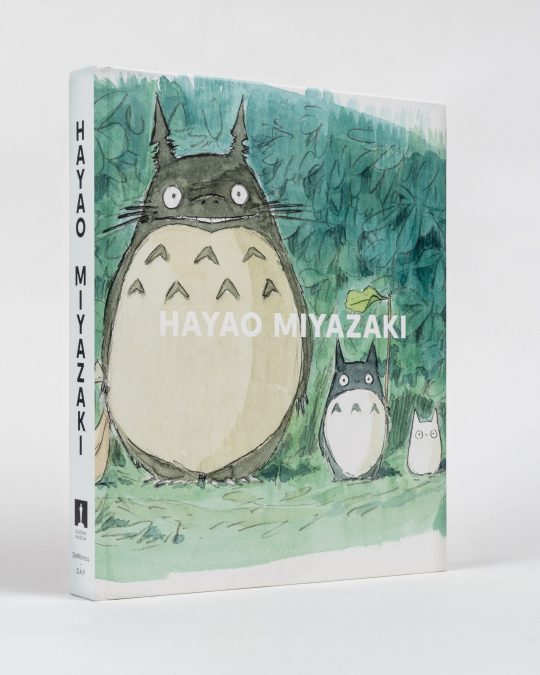
A richly illustrated journey through the extraordinary cinematic worlds of beloved filmmaker Hayao Miyazaki. Introducing hundreds of original production materials, including artworks never before seen outside of Studio Ghibli's archives. Concept sketches, character designs, storyboards, layouts, backgrounds, and production cels from his early career through all 11 of his feature films.
Purchase on Bookshop.org for $51 (On Sale)
—
Dot Line Shape: The Basic Elements of Design and Illustration by Victionary

Going back to basics, DOT LINE SHAPE is a comprehensive collection of projects that manifest the three elements in inspiring and ingenious ways to bring unique creative visions to life. No matter how trends or platforms change over time, they serve as timeless components that provide designers and artists around the world with infinite means of expression to make a lasting impact.
Purchase on Bookshop.org for $42 (On Sale)
—
If you're interested in finding more books on design, art, interiors, architecture, and more, check our Bookshop.org profile for more amazing recommendations!
#thedsgnblog#design#graphicdesign#designbooks#editorialdesign#bookdesign#print#interiordesign#inspiration
113 notes
·
View notes
Note
What do you miss about traditional porn production after the rise of Onlyfans???
There’s way more that I don’t miss. The widespread popularity & success of OnlyFans has democratized the adult industry in ways that I couldn’t have imagined 10 years ago.
As a performer, having the ability to sell my content directly to my fans (with a 20% cut of the pre-tax total going to OF to run the site and process payments) has made a massive difference in my ability to make a life and a future for myself in the adult industry.
In some ways, the industry has been turned on its head. In 2013, things were relatively top-down: I’d wait for the phone to ring, or a text from a director who wanted to hire me for a scene. The rates I could reasonably charge for my work were lower. I didn’t have a talent agent, but if I did, it would've been the same, except the agent would have arranged those bookings and taken a 10-25% cut of my scene rate.
Scene rates were lower for performers 10 years ago. A high-end average would be $600-800 for a girl/girl (non-penetrative sex scene, if you don’t count fingers or dildos 😉) and $800-1000 for a boy/girl (penetrative sex) scene. All of that income is pre-tax, since models in our industry are almost exclusively paid as 1099 contractors. (If you’re unfamiliar, that means Federal, State, and local taxes are not collected when we’re paid out by the companies we contract with, so we have to keep accurate records of our income throughout the year and then pay a huge chunk of money in taxes at the end of the year. Or quarterly, if you’re fancy.)
Scene rates never changed much with inflation. Rates were determined by what studios were willing to pay performers, not by what performers wanted to actually be paid. The only way to increase your rate was to just become more famous. But after OF came along and models started seeing their true worth — how much more they can make selling their own content directly — it started to change the industry in some very big, positive ways.
For example: If a model with a relatively large following on OF films a sex scene that costs $1000 to produce (wardrobe, makeup, hiring a photographer/videographer, editing), sells it for $15 and 400 fans buy it on OF within the first month it’s released, after OF takes their cut of 20%, she just netted $4000 on that scene before taxes. And she owns the content and can continue selling it basically forever. $4000 is a scene rate that no studio would pay a performer for a sex scene, unless it’s something kinda nuts, like an 8-guy gang bang with double anal.
If you wanted to net $16k of pre-tax income per month, what would you rather do? Film a double anal gang bang every week, and have to do that every month for reliable income — or film four regular ass sex scenes (regular-ass sex, not regular ass-sex, although I do highly recommend both) with your real-life partner every month, that you can resell infinitely, while in the comfort of your home, living in a city that's way more affordable than Los Angeles?
These days, I know of performers who've never worked on a studio set, but took years building a loyal audience on OnlyFans and similar sites, and when they’re approached by a studio like Brazzers to shoot a boy/girl scene, they can truthfully declare that it’s not worth their time to even set foot on a studio set for less than a $4000 scene rate. Yes, this is an extreme example and not at all indicative of what the average model earns on OnlyFans, but it’s an important example to illustrate the impact of sites like OF on the power structures of the industry. Models being less dependent on studio work is very good for us, the models.
Since I came out of retirement in 2020 and started depending on my own content sales to make a living, I’ve raised my rates for studio performances, as most of us have. That’s the biggest positive change for me, personally — not having to depend on studio work anymore. When you see my face in an AdultTime or Brazzers scene, it’s because I have happily chosen to work with that company, I’m being paid the rate I asked for, and I’m thrilled to grow my fan base by appearing on a studio site with a wider reach than my own.
That’s how a lot of us treat studio work these days: It’s not a primary source of income. It’s a way for us to advertise our own brand as creators, and hopefully gain some new fans who are interested in subscribing on OF and supporting us directly.
To get to your actual question, yes, there are downsides. While OF and similar sites have democratized (one might even say… SOCIALIZED! ☭ ) the industry, it’s also caused a certain degree of decentralization, and that’s not always great.
One component of the adult industry in particular (specifically the American, mostly LA-and-Las-Vegas-based industry, because to be honest IDK what the heck goes on in other countries) requires at least some centralization to function properly.
I'm referring to our STI testing protocol: Industry testing clinics report to a common database called PASS, operated by our industry’s nonprofit trade association, the Free Speech Coalition (FSC). The database obscures personal details like legal names, but shows a cleared-to-work or not-cleared-to-work status, verifying that the performer has a valid test which is less than 14 days old and shows a negative result for all STIs.
These testing clinics aren’t just any old Quest Diagnostics location — they’re operated by private companies which exclusively service the adult industry, and use the most sensitive tests possible for early and accurate detection of STIs.
The database also functions as a contact-tracing system. In the event that a performer tests positive for something, the database is an indispensable tool for notifying other performers who were exposed, isolating the incident, and halting production within that group of exposed performers until they can all be treated (for those STIs for which an effective treatment exists) and retest with a negative result.
In fact, our database is so effective that early in the COVID-19 pandemic, it was held up as an example of an effective contact-tracing system. It’s the reason our industry was better prepared than most to handle our response to the pandemic — we already had a functional, reliable testing system in place.
But the testing system is only effective if all of our industry’s performers respect and participate in it. And of course, you don’t need to live Los Angeles or Las Vegas to be making your own porn and selling it on OnlyFans. During the pandemic, we all saw the news articles about the explosion of new users on OF, many of them content creators.
It’s one thing if you’re a monogamous couple only fucking each other on camera for your OF content, but it’s entirely different if you’re a model who’s never worked in studio porn or even heard of the PASS database, you live 2000 miles from LA, and you’re producing dozens of scenes a month with different sex partners. Then we have a problem. We don’t know how that model is getting tested, or if they are at all, or who they worked with — so if the model or any of their scene partners tests positive, there’s no record of the positive result and no contact tracing. And if they work with another person who travels to LA, and spreads the STI into the performer pool there, now they’ve put the health and livelihoods of hundreds of other porn performers at risk.
I’ve heard enough stories from my peers to know that this does happen. I have seen Twitter rants from amateur OF creators who don’t value the testing protocol and complain that getting tested every 14 days is too expensive. (Currently, the cost of a full performer panel is close to $600/month, if you test every 14 days. We would all love to see more affordable performer panels, and it’s very much an active discussion in the industry. PASS also offers a testing subsidy for performers, funded by many corporate and individual donors, which helps buffer the cost of testing). They’ll say things like “It’s fine, I’m only shooting with my close friends, and we trust each other.”
They're sorely mistaken. Following the testing protocol is not a burden, it's a non-negotiable requirement for being a performer in this industry. Chlamydia, gonorrhea and syphilis don’t give a shit who you "trust," and neither do the folks who want to shut down our entire industry and make us and our jobs nonexistent.
The adult industry is notoriously insular and defensive for good reason. We’re heavily stigmatized and often it feels like we’re hanging onto our legality and legitimacy by a thread, because we are.
Compared to 10 years ago, there are many more vocal opponents of the porn industry now, and a lot of those critics and antis have way, way more money and power and influence than any single person or corporation in the adult industry. So yeah, the last thing we need is some content-creating doofus in Tightsqueeze, Virginia (yes that's a real place look it up*) coming along to compromise the testing system our industry has relied on for 20+ years, and making us all look bad.
It’s Missouri Senator Josh Hawley’s reactionary Christian wet dream to be able to point a finger at a site like OnlyFans and say, “Look at all these young people indiscriminately profiting from their homemade porn, and look at how many of them got an STI from their immoral behavior! They’re spreading disease, and the entire porn industry needs to be made illegal!”
Josh Hawley has never said those exact words, but he could, and he would be more correct than his actual argument against the porn industry, which is that we’re all child groomers. (Do I need to say here that we’re obviously not? My own fans don’t expect me to actually acknowledge that ridiculous argument, right?)
In a perfect world, every content creator who has sex on camera would be working with a valid 14-day test from a clinic that reports to the PASS database. But it’s unrealistic to expect perfect awareness and participation from every single spicy content creator, and if that did suddenly happen overnight, the testing clinics would be flooded with thousands more patients than they’re prepared to handle.
But that doesn’t mean we shouldn’t all try to do better. Personally, I think our industry needs to be a little less insular, and more willing to accommodate and educate newcomers about how we keep ourselves safe and legal ‘round here. And we definitely need a wider network of testing clinics, so that people who don't live in LA or Vegas have an easier time participating in the testing protocol.
From an anti-porn outsider’s point of view, the OF model who lives in Bumfuck, Ohio is just as much a part of the porn industry as Riley Reid or Angela White. We’re all just evil, diseased, child-grooming sinners to them. OnlyFans has done a great deal to help democratize the industry, but I think we still need a little more socialism, in the form of workers helping workers, educating each other and standing together to defend our ability to make a living safely and legally.
*Footnote: I don't actually know if there are any OF content creators in Tightsqueeze, VA. I just googled and picked a funny town name. But if a content creator who literally lives there reads this, and you want to get tested and shoot content with me, holler at ya girl, I'm only an 8 hour drive away.
225 notes
·
View notes
Text


When Dora Maar died on 16 July 1997 at the age of 89, few people seemed to notice. It took the French newspaper Le Monde – in her home country – 10 days to publish anything. And when journalists did cotton on, they didn’t seem to think Maar was the story. The New York Times called her “a muse of Picasso” and the “principal model for many of his so-called weeping women portraits in the late 30s and early 40s”. The Independent, while admitting that Maar had been an artist in her own right, suggested that she would nonetheless be “remembered as the most poignant of Pablo Picasso’s mistresses”.
Forget that she’d also been a major surrealist photographer, one of the few women in that circle, and that she was still painting into her 80s. For critics, she was Picasso’s Weeping Woman – the eternally spurned mistress and muse. Maar herself bitterly resented being regarded as a sort of art-world Miss Havisham, the subject of someone else’s picture. “All [Picasso’s] portraits of me are lies,” she once said. “Not one is Dora Maar.”
Not before time, the Weeping Woman is having the last laugh. After a spell at the Pompidou in Paris, a major retrospective is heading to London’s Tate Modern then Los Angeles. The largest exhibition of its kind yet staged, it features nearly 300 objects: photographs, photomontages, advertising mock-ups, self-portraits, watercolours, oil landscapes and still lives. Few of these objects have been exhibited before, and certainly not on this scale. The sense is of a curtain being pulled back. Forget those Picasso portraits: here is how Dora Maar actually wanted to be seen.
Born Henriette Théodora Markovitch in Paris in 1907, to a French mother who owned a fashion boutique and a father who was a Croatian architect, her upbringing was multicultural. The family relocated to Buenos Aires when she was three, and she spent her childhood shuttling between Europe and South America, taking her first photographs on the sea journeys between. She trained as a painter in Paris, but found herself drawn to photography in the 1920s, becoming friendly with Henri Cartier-Bresson and Brassaï.
“She was very ambitious,” says her biographer, Victoria Combalia. “She wasn’t sure which direction she was going in, but she had such energy.”
In 1936 she met Picasso, and seems to have decided that the painter, nearly 30 years older, was her next project. The story of the encounter that turned them into lovers has been much mythologised. Legend has it that Maar sat in the famous literary watering hole, the Cafe les Deux Magots, playing a game where she stabbed a knife between her fingers to excite Picasso’s attention.
Whatever the truth, Combalia suggests that the striking thing is the way it suggests that she, not he, was in charge. “She wanted to seduce him, I’m sure. The whole scene with the knife is like a sadistic joke, almost a performance.”
Yet the balance soon tipped the other way. Picasso was also having a long-running affair with Marie-Thérèse Walter, which he refused to break off. He seems to have taken a perverse thrill in making Walter and Maar compete for his affections, describing a story where they came to blows in his studio as “one of my choicest memories”. Having initially painted Maar as a nymph or a bird, his portraits begin to show her in tears, notably the excruciating Weeping Woman (1937), now in Tate’s permanent collection, in which she seems to dissolve before our eyes.
Maar’s own artistic response is similarly hard to look at, though in quite different ways. A painting of hers from the same year, The Conversation, shows her and Walter sitting next to each other, almost in mirror image. Walter looks out, passive and inscrutable; Maar has her back to us, face hidden.
Yet while the relationship was emotionally punishing, it was productive. 1937 was also the year that Picasso painted Guernica, and Maar – as well as teaching him darkroom techniques – agreed to photograph the process of its creation. Indeed, it seems likely that his decision to depict that particular atrocity came from Maar, who was far more politically engaged. Not only does its style – severe black-and-white, almost photographic in its pitiless detail – borrow from her work, she actually painted a small section of it.
“He trusted her,” says Tate Modern director Frances Morris, who interviewed Maar when the latter was in her 80s. “As much as being a sexual or emotional relationship, it was a collaborative one.”
When their relationship finally fell apart in 1945, Maar was devastated and suffered a brief breakdown, intensified by the death of her mother. The guilt-stricken Picasso helped her buy a house in Provence, where she spent an increasing amount of her time. Catholicism began to occupy her life; rumours circulated – fanned by her former partner – that she’d gone mad, or become a recluse.
The truth is different, Combalia says: Maar kept making art, producing textile designs and devoted more time to painting. She also travelled, and continued to exhibit through the 50s and 60s. It’s also not true that she abandoned photography, as some claim. Though she made fewer photographs after the break with Picasso, she continued to experiment, crafting a late series of photograms (photographic prints made without a camera) in the 80s, as if reconnecting with her younger artistic self.
Maar never regained the profile she had experienced in her 20s, yet it’s wrong to say she disappeared. It was a slow withdrawal, and came about largely because Maar wanted to focus on her art. “In letters she writes, ‘Well, I don’t want to be social, I want to do my own thing. I have to paint,’” says Combalia
Morris, who visited Maar at her apartment in Paris in 1990, agrees. “It was an artist’s home. Every surface, every wall, spoke of that. There were easels and lots of canvases in her studio, covered in polythene. She was still working.”
What was Maar like to meet? Morris laughs: “When she answered the door, I thought at first it was the maid, this little old woman.” But she was soon struck by Maar’s forcefulness. “She was terrifically strong, you could see that. I think that’s what it was, in a way: making art was more important to her than how she was perceived.”
“She was very curious about the world,” Combalia adds. “She was always asking me what I was doing in Paris, what the name of my boyfriend at the time was. She loved gossip.”
Despite Maar’s talents being overlooked during her lifetime, Combalia believes we should be grateful that we can see so much work, and that so much of it is so good. “She really deserves to be known. We owe her that justice.”
32 notes
·
View notes
Text

Happy Birthday Liza 🎉
Liza Minnelli was born on March 12, 1946, Beverly Boulevard, Los Angeles.
👉 February 18th, 1990 - Queen Story!
Freddie Mercury's final public appearance on stage when he joined the rest of Queen in London to collect the Brit Award for Outstanding Contribution to Music.
All the band members attended, Brian May giving a short speech.
In this photo: Huge party took place after at Groucho Club in Soho for Queen's 20th Anniversary Party
🔸CIRCUS: What’s your favorite form of entertainment?
MERCURY: Listening to Jimi Hendrix; Liza Minnelli; going to art galleries. I like most of the Victorian artists. I like lot of detail work, water colors, that sort of thing. And popular stuff like Dali.
CIRCUS: Would you like to date Liza Minnelli?
MERCURY: Oh, no. I would like to talk to her, yes.
CIRCUS: What do you think she would tell you?
MERCURY: I would just like to meet her after a performance and take it from there. I don’t know what she would say to me, or what I would say to her.
CIRCUS: I’d like to know what you think about these people: Jimi Hendrix, Liza Minnelli, Led Zeppelin…
MERCURY: Jimi Hendrix is very important. He’s my idol. He sort of epitomizes, from his presentation onstage, the whole works of a rock star. There’s no way you can compare him. You either have the magic or you don’t. There’s no way you can work up to it. There’s nobody who can take his place. Liza, in terms of sheer talent, just oozes with it. She has sheer energy and stamina, which she gets across the stage, and the way she delivers herself to the public is a good influence. There is a lot to learn from her. Led Zeppelin is the greatest. Robert Plant is one of the most original vocalists of our time. As a rock band they deserve the kind of success they’re getting
- Freddie Mercury
Interview Circus Magazine 1975
Pic: Freddie Mercury with Liza Minnelli at Queen's 20th Anniversary Party
📸 Photographer Richard Young
#liza minnelli#1990#1946#happy birthday#london#zanzibar#legend#queen#brian may#john deacon#freddiebulsara#queen band#freddie mercury#roger taylor#richard young
17 notes
·
View notes
Photo

Gloria Graves is dug up from her steel tomb, Los Angeles, 1935
19-year-old Gloria Graves has been arrested for violating the city's Marathon ordinance outlawing contests and entertainments involving endurance that might affect participants' health due to locking herself in a steel tomb for the past week at Fifth Street and Vermont Avenue.
Gloria's open coffin rests on solid ground with her still inside of it. The inside of her coffin is white with a speaker attached to the inside so she could communicate with outsiders and a light bulb so she could see.
"Tomb Girl's Bail Fixed," Los Angeles Times, 17 Nov 1935
#gloria graves#1930s#coffin#old los angeles#vintage#tomb#los angeles#burial artist#los angeles times#corinne nienstedt#buried alive#sideshow#endurance contest#great depression#black and white#photography#photo restoration#los angeles times photographic collection#tomb girl#buried alive gal#ucla department of special collections#ark:/21198/zz002dhffs
356 notes
·
View notes
Text
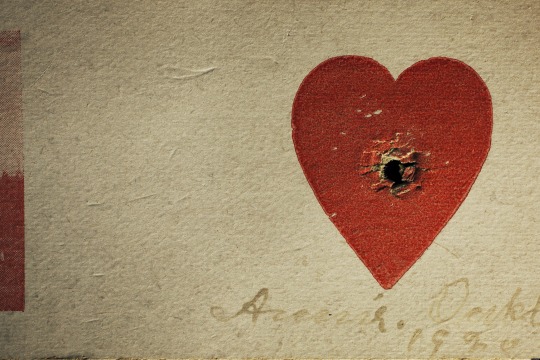
Annie Oakley's heart target, private collection,
Los Angeles, California, 2010
[Photograph: Annie Leibovitz]
[Jim Fagiolo]
* * * *
Truth’s an indefinite article.
When we live, we live for the last time, as Akhmatova says,
One the in a world of a.
—Charles Wright, from “Broken English” in Chickamauga (Farrar, Straus, and Giroux, 1995)
#Jim Fagiolo#Annie Leibovitz#Charles Wright#Akhmatova#poetry#poem#Annie Oakley#shot to the heart#heart
9 notes
·
View notes
Photo
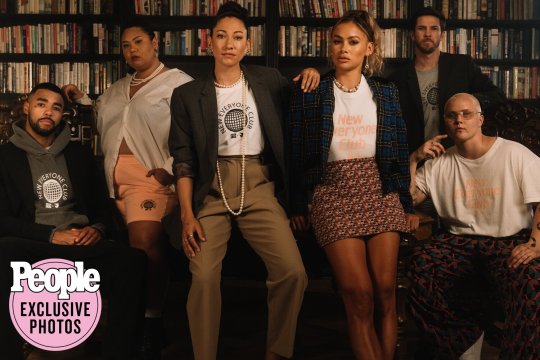
Angel City FC's Christen Press on the 'Unfair and Unjust' Expectations as a Female Athlete
The soccer star opens up about the impact she hopes to have on aspiring young players while launching her all-inclusive and limited edition clothing line, the New Everyone Club
Forget the old boys' club mentality. Angel City FC's Christen Press is putting her own spin on the idea with her new, limited edition merch collaboration — the New Everyone Club.
The collection is a first of its kind clothing line meant to celebrate and embrace underrepresented groups and create a community where all walks of life — women, people of color, non-binary individuals and other marginalized groups — are invited to the table to mutually empower one another.
"When we had the initial narrative of what is The New Everyone Club, the first thing that comes to mind is, how do we bring this story to life?" Press, 33, tells PEOPLE while announcing her collaboration with Angel City, Klarna and re-inc. "Looking at images of spaces that have been dominated by men like golf clubs and board rooms was part of the initial conception for this."
But she realized that it's not "enough to have an old boys' club and say, 'Okay, let's open the doors to women.' That's not good enough. 'Let's open the doors to people of color. Let's open up doors to queer people.' That's not good enough. We have to design spaces with those groups in minds, and that's the only way you get equity."
The line will start with socks, shorts, shirts and a hoodie with all-inclusive sizing, for anyone to wear.
Press is thrilled with New Everyone Club, but she also laments as a female athlete, there are higher expectations on her to do more outside of the soccer pitch than male athletes.
"I think on the one hand, there is a cerebral understanding that I have that it shouldn't be my expectation as a female athlete to be so much more than an athlete," she says. "But those are the unfair and unjust expectations that are put on women."
Still, Press wants to do her part for young, aspiring players.
"Being inspirational for young female athletes absolutely falls in that category of bringing me purpose and meaning, and so that's the why, and when you have a strong why, then everything else is easy and falls into place," she says.
In order for her message to be heard, the US Women's National Team player knew she had to capture the perfect campaign image for her line. They photographed it in a dark library, a nod to those old boys' club spaces that others typically can't get into.
"Looking at images of spaces that have been dominated by men like golf clubs and board rooms was part of the initial conception for this, and Angel City did a great job collaborating with us on that and then truly blowing it out of the water and how we brought it to life."
And now, as her team tries its best to make the playoffs, Press, who's sidelined due to a June ACL tear, is focusing on spreading positivity.
"It's actually beyond soccer and beyond everything because part of the reason that I was so excited to join Angel City was because the values reflected," Press shares. "Those [of] my own and the ones that I've instilled in my business."
The collaboration first drops exclusively on Klarna Sept. 23 and ranges in price from $38-$168.
With 10 percent of proceeds being donated to the Downtown Women's Center, a non-profit organization fighting to end homelessness for women in greater Los Angeles, Press knew this special collab was the perfect match.
"It's for all people that are trying to pave a new way forward, who are bucking old norms and status quo expectations and ready to re-imagine a more beautiful future," says the two-time Olympian. "It is absolutely why I thought it would be a fantastic opportunity for our brands to come together, to celebrate our beautiful and diverse communities that we've both developed, either inside or close next to the women's soccer world."
source
225 notes
·
View notes
Text

Richard Ritchie, Alma Lloyd, Paula Stone, and Ronald Howard at a cocktail party, Los Angeles, 1936. February 23, 1936. Collection: Los Angeles Times Photographic Collection
9 notes
·
View notes
Text
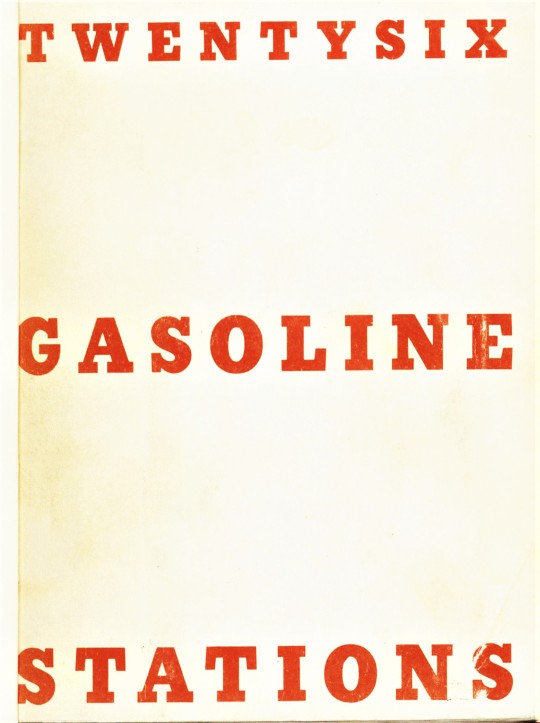


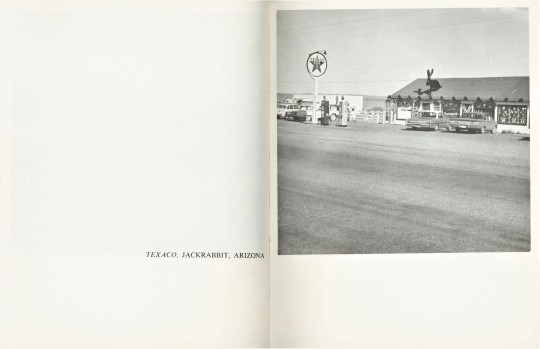
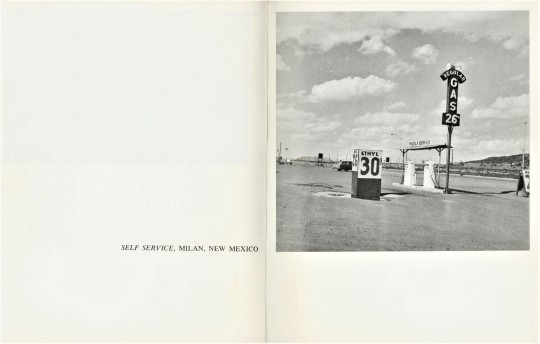

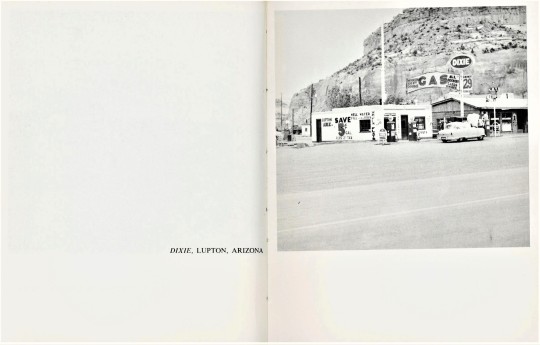



Staff Pick of the Week!
Today’s Staff Pick of the Week explores pop artist Ed Ruscha’s Twentysix Gasoline Stations. Between 1962 and 1978 Ruscha (b. December 16, 1937) created sixteen small artist’s books, Twentysix Gasoline Stations was his first and is widely regarded as the first modern artist book. Inspired by uncomplicated books he saw while visiting Europe, Ruscha set out to compose a neutral “collection of ‘facts’” and began photographing gas stations along Route 66 in the early sixties. In an interview after the book was published Ruscha shared that he’d taken sixty photographs and edited them down to twenty-six by removing any he thought might be too interesting. The book was not well received in the public eye but was a clear and noted inspiration to other artists of the time, including Corita Kent and Andy Warhol.
Twentysix Gasoline Stations is a remarkable collection marking a moment in time that conjures the great American road trip, highway culture, and striking examples of lettering and logos from the sixties. As Ruscha intended it to be an unextraordinary item, it was printed in three editions to supposedly flood the market. Twentysix Gasoline Stations was first published in 1963 in an edition of 400, the Special Collections copy is part of the larger third edition published in 1969 by the Cunningham Press out of California. Our collection also holds most of Ruscha’s other sixteen artist books including the popular Some Los Angeles Apartments, Every Building on the Sunset Strip, and Nine Swimming Pools and a Broken Glass.
-Jenna, Special Collections Graduate Intern
View more Staff Picks here.
#staff pick of the week#ed ruscha#ruscha#twentysix gasoline stations#pop art#route 66#photography#Jenna
42 notes
·
View notes
Text

Photo: Ormond Gigli
This is a gift🎁link, so anyone can read the entire article about Ormond Gigli's photograph "Girls in the Windows" (1960), even if they do not subscribe to The New York Times. Below are some excerpts from the article by David Segal:
Standing on a second-story fire escape, a photographer named Ormond Gigli is shouting instructions through a bullhorn. Forty models are posing in the window frames of brownstones across East 58th Street on Manhattan’s Upper East Side, a menagerie of colorful dresses and evening gowns. Two more women stand on the sidewalk, next to a silver Rolls-Royce.
It is the summer of 1960 and Gigli is in a rush. Demolition on the brownstones has already begun — that’s why there’s no glass in those windows — and the day after the shoot, the buildings will be razed. But the demolition supervisor has agreed to let Gigli commandeer the place for two hours during an extended lunch break, under one condition: The supervisor wants his wife in the picture. (She’s on the third floor, third from the left.)
Nobody has hired Gigli, a 35-year-old freelance commercial photographer, to create “Girls in the Windows.” He’s working without an assignment because he wants to memorialize those buildings, which stand directly across the street from his home studio. What he doesn’t know is that the image will become one of the most collected photographs in the history of the medium.
Over the last 30 years, roughly 600 signed and numbered copies have been sold, at prices that typically range between $15,000 and $30,000. The image is offered at galleries around the world — in New York, Los Angeles, Palm Beach, Cleveland, Atlanta, Boston, Santa Fe, London, Paris and, until the invasion of Ukraine, Moscow. Buyers who want to cut out the middleman can buy directly from the artist’s estate.
#girls in the windows#ormond gigli#photography#Is this the world's highest-grossing photograph?#david segal#the new york times#gift link
13 notes
·
View notes